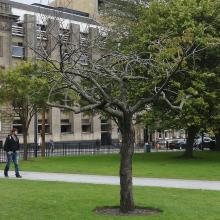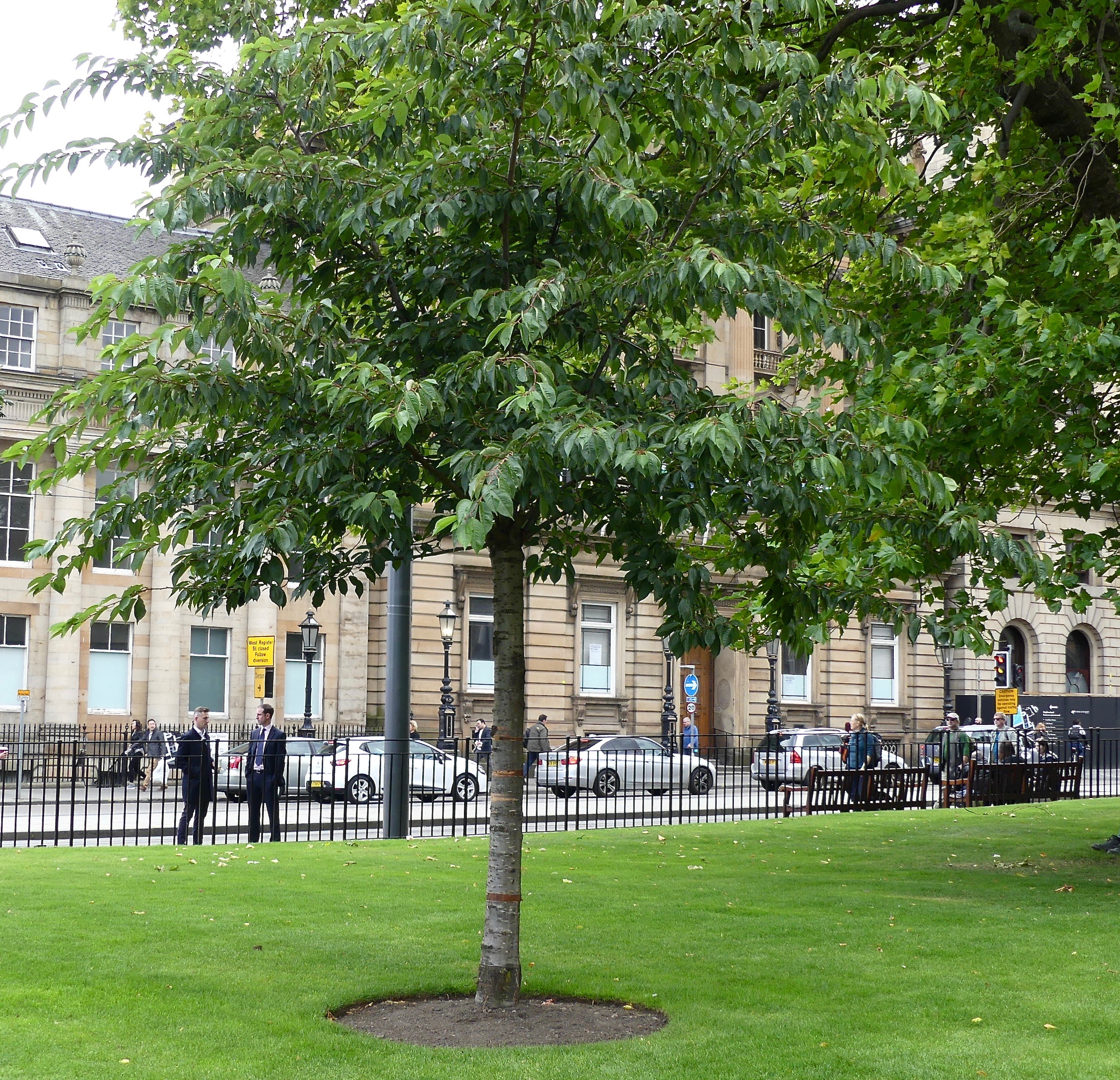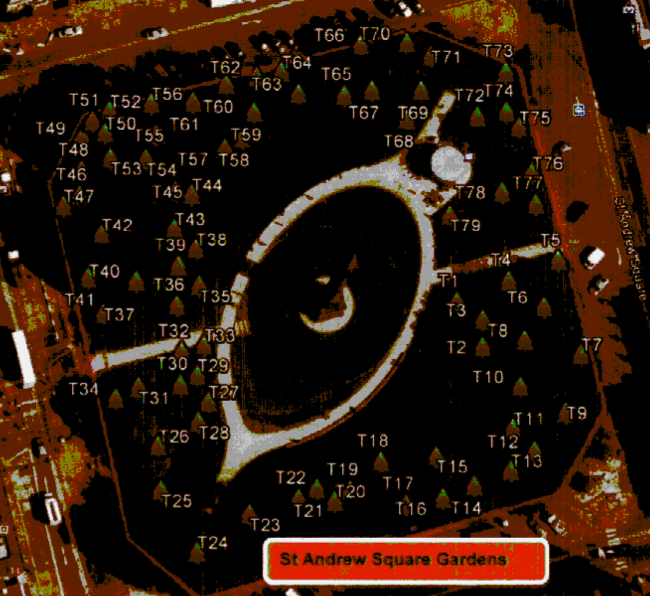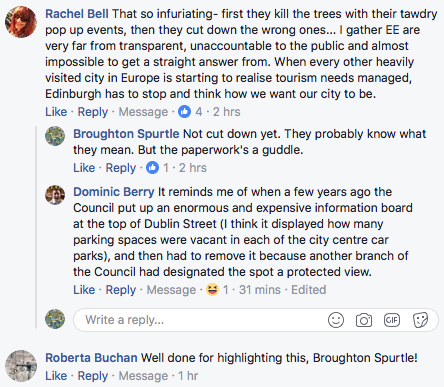
MISTAKEN IDENTITY AND MISSED OPPORTUNITIES?
Essential Edinburgh have been granted permission to remove a Japanese cherry from St Andrew Square Gardens (Ref. 17/04090/TCO).
Their reason for taking it down is that it’s ‘in decline’, and they undertake to replace it with another of the same species.
EE identifies the tree in question as that one shown here top-right. They say it is listed as T4 on an accompanying plan.
However, the real T4, shown below, is actually situated on the opposite side of the Gardens.

This did not deter Council officials, who give as their reason for approving the work that it is ‘based on sound arboricultural management and will have no more than a neutral effect on the character and amenity of the conservation area’.
It seems to us that cutting down the wrong tree here would have a substantial effect.
As far as we can make out, the tree EE really want to remove is numbered T32 on their plan. They don’t say what’s caused its decline, so we looked for clues in the survey they commissioned Potter Tree Consultancy to undertake on 13 October 2016.

The report noted ‘extensive decline’ in T32’s crown, for which the remedy was to create around its base a 0.5m radius mulch ring and to de-compact the soil within 6 months. It would be interesting to know whether EE got round to this within the timescale suggested.
Meanwhile, the healthy-looking T4 across the way has problems, too. PTC’s report described its condition as ‘adequate’ but noted ‘highly compacted soil’ at the base. It recommended root collar excavation to de-compact and applying mulch to create a 0.5m radius mulch ring within 1 month. Again, it would be interesting to know whether EE carried out the work within the timescale suggested, or at all.
The elephant in the iceberg here, of course, remains overuse of the site.
As reported in Issue 265, unless steps are taken to reduce footfall, returfing, vehicle use, and erection of temporary structures above the trees’ roots (and also to undertake the recommended decompaction of the soil around them in timely fashion), we fear many more tree removals will follow in future.
Simply replacing like for like is not an adequate solution.
----------------





